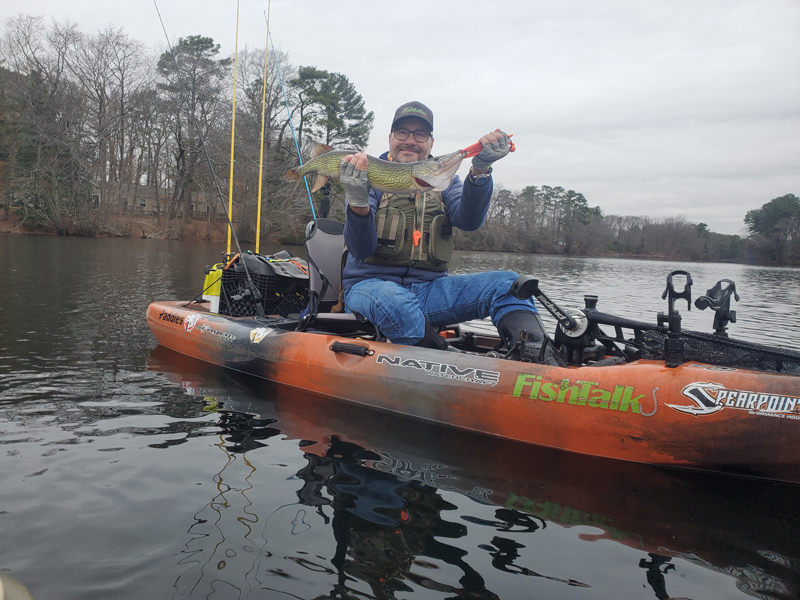Unlike the winters of my youth in the Midwest where ice fishing would have been the only midwinter fishing opportunity, here in Maryland you can almost always still get out and fish. Anyone who knows me knows that I’ll be out on the water casting on pickerel, largemouth bass, and crappie throughout the winter months. But there’s more to my winter months than just dragging the kayak out and taking a few casts.

As early as December I’ll start to get my gear in order for the upcoming season, even though I’m still fishing quite a bit. A summer of fishing can be hard on your gear. Pliers and hemostats may show signs of rust from the Bay’s brackish water. Reels might have a slight squeak, and baits are showing some real signs of wear. And then there are the kayaks…
Winter is a great time to tackle that angler to do list that you’ve been putting off all summer, especially on those bitterly cold and windy days when you just can’t make yourself get out on the water. Here are a couple of a to-do lists:
Fishing Kayak Maintenance
- Check your kayak’s hull for any wear, and clean off any built-up dirt or grime.
- Check your peddle system closely, and make any adjustments or repairs necessary. Lubricate joints and gears where applicable.
- Clean and wipe down your depth finders, checking batteries and replace them if needed. Remember not to leave batteries in units over the winter when they don’t get much use.
- Adjust the steering system cables, check rudder alignment, and apply a lubricant at the pivot points.
- Clean the seat and repair or replace any worn or broken fabric, straps, and/or adjustment points.
Additional Gear Maintenance
- Wipe down and lube reels.
- Change any worn fishing line and replace leaders.
- Get a soft rag and wash and wipe down your fishing rods, while also checking the guides for wear and make any needed adjustments and repairs.
- Take up some steel wool and clean your pliers, hemostats, and braid scissors, wiping away any rust. Place a drop of oil at the joints, too.
- Check for cracks in hard-bodied baits, the sharpness of hooks, and rust on any inline and spinner bait blades.
- Organize and clean your tackle storage boxes.
I store my tackle in a temperature-regulated space. My fishing rods are stored in rod holders; you don’t want to store them leaning against a wall for any length of time. Doing so will cause a permanent bend in your fishing rods. If I store my rods and reels for the long term, I remove the bait and wind up the line, keeping the tension off the reels.
My baits are stored in tackle storage boxes. All freshwater hard baits in one box, jigs in another, inline spinners in their own box and so on. Saltwater baits are stored separately from freshwater baits, in boxes by the type of bait also. Soft plastic baits are stored in their original packaging and separated by bait type and colors, keeping fresh and saltwater plastics apart.
If you don’t have the time or skill you can take your rods and reels to your local tackle shop for repairs and line replacement. The offseason is a great time of year to show your support for your local tackle shop by loading up on replacement baits and using their other services, too.
And when the weather allows… go fishing! Remember, a cast not taken is a fish not caught — during the winter months too!
-By Eric Packard